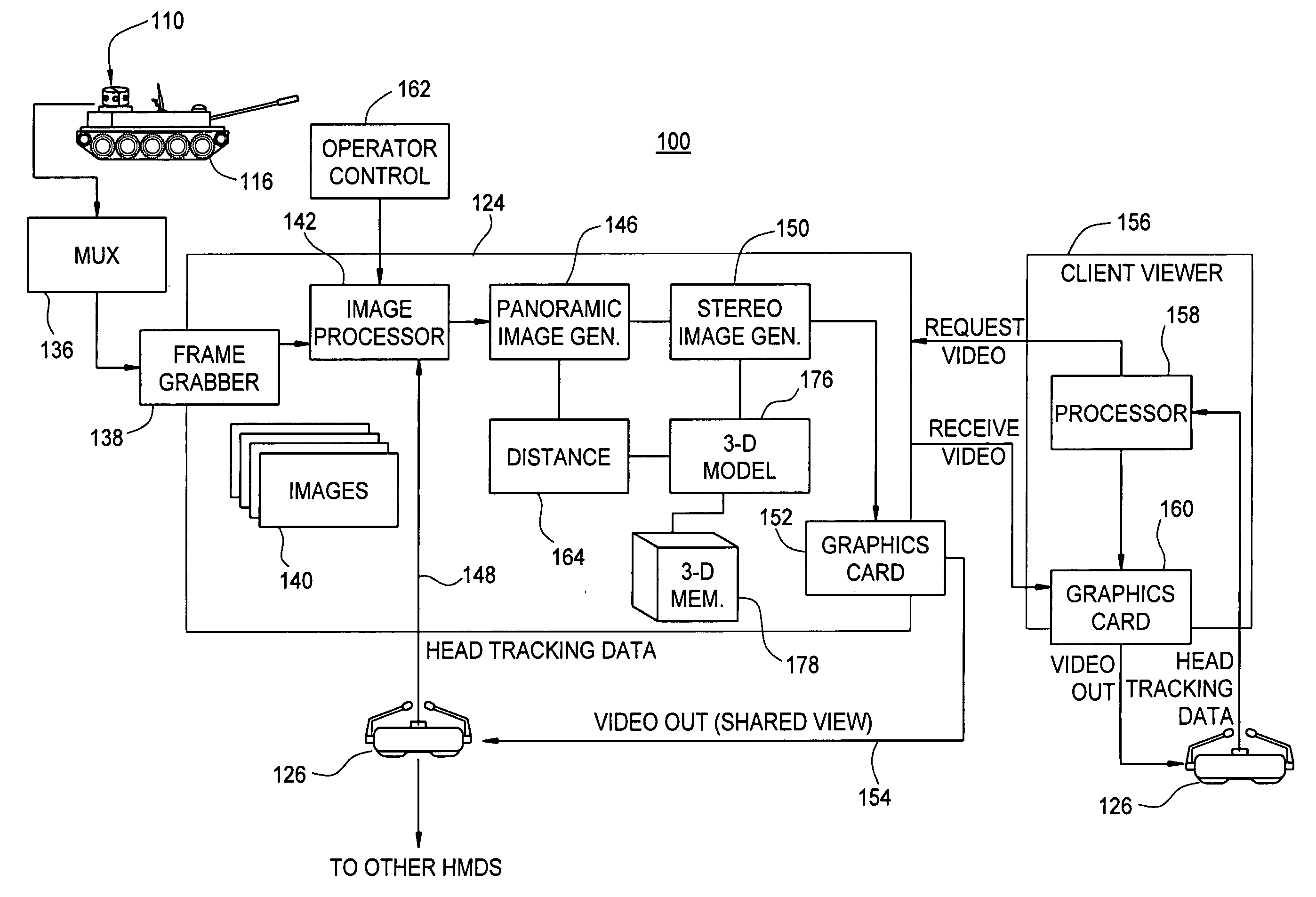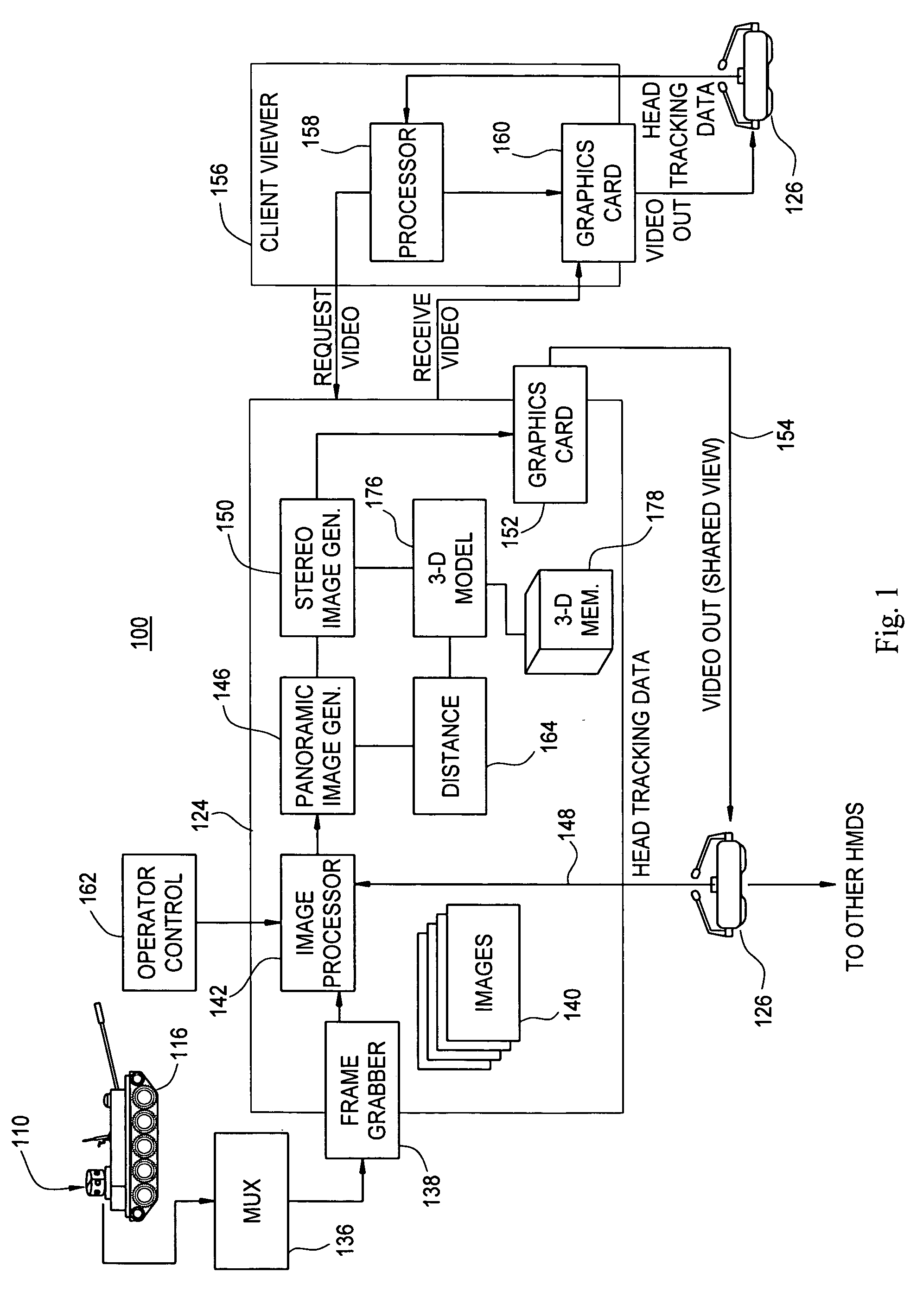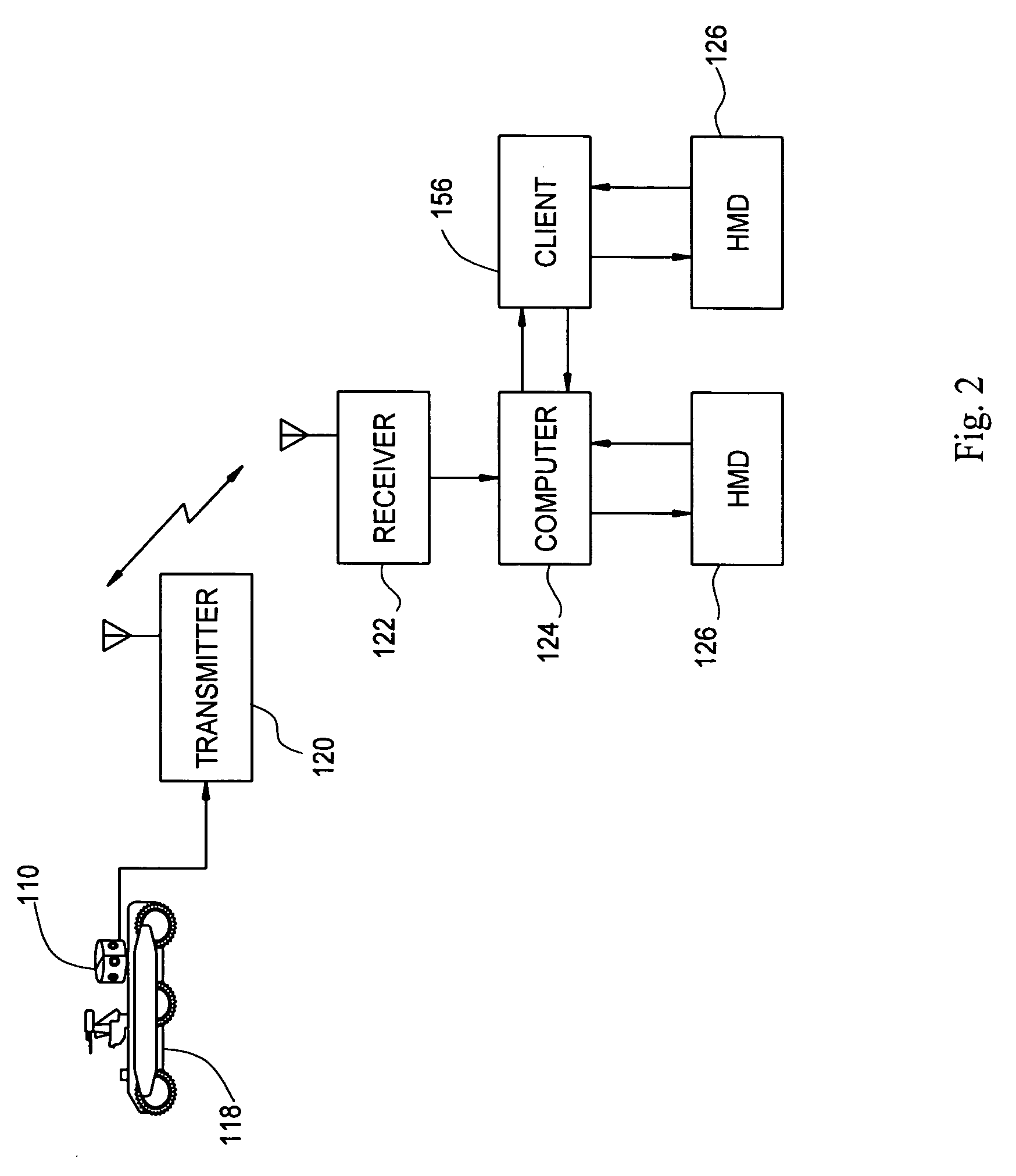Multi-user stereoscopic 3-D panoramic vision system and method
a multi-user, panoramic technology, applied in the field of sensors and displays, can solve the problems of not being able to share non-coincident stereo views of the outside of the vehicle, not being able to simultaneously acquire and display data panoramically, at its true resolution, in real-time, as three-dimensional (3-), severely hampered the ability to implement adequate operator interfaces, etc., to reduce collateral or unintended damage
- Summary
- Abstract
- Description
- Claims
- Application Information
AI Technical Summary
Benefits of technology
Problems solved by technology
Method used
Image
Examples
Embodiment Construction
[0025] Referring now to the drawing figures, FIG. 1 depicts an exemplary vision system embodiment 100 employing an array 110 of sensors 112. An enlarged view of an exemplary sensor array 110 appears in FIG. 3. The sensor array 110 may include a housing 114 enclosing the plurality of sensors 112. The sensor array 110 is mounted on a vehicle 116, which is a tank in the depicted embodiment, although other vehicle types are contemplated, including all manner of overland vehicles, watercraft, and aircraft. Alternatively, the vision system of the present invention may be employed in connection with other types of structures or enclosures. For example, in FIG. 2, there is shown another exemplary embodiment wherein the camera array 110 is employed in connection with an unmanned, remotely operated vehicle 118. The vehicle includes an onboard transmitter, such as a radio frequency transmitter 120 for transmitting video signals from the sensor unit 110 to a receiver 122 coupled to a computer 1...
PUM
 Login to View More
Login to View More Abstract
Description
Claims
Application Information
 Login to View More
Login to View More - R&D
- Intellectual Property
- Life Sciences
- Materials
- Tech Scout
- Unparalleled Data Quality
- Higher Quality Content
- 60% Fewer Hallucinations
Browse by: Latest US Patents, China's latest patents, Technical Efficacy Thesaurus, Application Domain, Technology Topic, Popular Technical Reports.
© 2025 PatSnap. All rights reserved.Legal|Privacy policy|Modern Slavery Act Transparency Statement|Sitemap|About US| Contact US: help@patsnap.com



